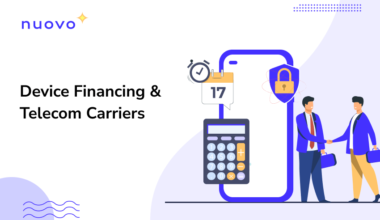Mobile money is a transaction that occurs using mobile phones. A bank account is not required to carry out mobile money services, the only requirement is a basic mobile phone. It gives people the ability to transfer funds, save, borrow and even pay bills via mobile phones, thereby moving from an informal cash economy toward a more inclusive digital economy.

People living the digital life thanks to mobile money now have the opportunity to securely access funds anywhere and save money more efficiently than traditional methods.
How Mobile Money Works
By embedding keywords into text messages sent to specific mobile numbers, mobile phones can tell the wireless carrier to add a given amount of money to the sender’s bill. When the bill is paid, the phone company transfers the amount to the recipient.
To make a deposit or collect money, mobile money systems use agents, individual entrepreneurs that help people with withdrawing and depositing their physical cash. Agents are present at key locations–including remote rural locations–with cash and a mobile phone.
People even use mobile money for cashless transactions such as buying groceries or paying for services like haircuts.
Major Mobile Money Trends
Fresh data from GSMA’s latest report on mobile money shows:
- In 2021, the mobile money industry processed more than $1 trillion in transactions.
- Last year, the number of registered accounts reached 1.35 billion globally, up 18 percent since 2020 and 10 times more than in 2012.
- The number of active agents grew more than 10 times, from 534,000 to 5.6 million in under a decade.
- According to the Global Adoption Survey, two in five mobile money providers offer credit, savings, or insurance products to help protect families and businesses against uncertainty and crisis.
- Merchant payments reached an average of $5.5 billion in transactions per month and account for 21 percent of the value circulating in the mobile money system (P2P and merchant payments).
- Mobile money-enabled bulk disbursements grew by another third in 2021, reaching $6.58 billion. This uptick is due to more employers turning to mobile money to pay their employees.

Read more: 10+ Popular Global Smartphone Statistics (2022)
How Mobile Money Drives Economic Growth
1. Access to Banking Services
In emerging countries, people have more mobile phones than bank accounts. For instance, For rural Kenyans, the nearest bank is kilometers away, carries the risk of theft, and getting there is expensive. The launch of M-Pesa in Kenya in 2007 transformed the way the unbanked population managed their finances.
After spreading rapidly in East Africa and the sub-Saharan region, mobile money has shown traction in Asia. For example, in Afghanistan, only 200 out of 1000 adults have bank accounts but 80 percent of the population has mobile phones. The value of transactions grew by a factor of four–to 1.2 percent of GDP in 2018.
2. Helps Businesses
By conducting transactions with mobile money, business owners can avoid the risk and hassle of cash. Cashless transactions also open up new opportunities for micro and small enterprises, especially in low-income countries, to access financial services.
Mobile credit allows customers to stagger payments for large purchases and helps entrepreneurs expand their businesses. Kenya’s M-Shwari credit service has lent small sums to 10 million individuals and small- and medium-sized businesses.
In East Africa, 200,000 homeowners were able to buy solar power via mobile micropayments to M-Kopa.
3. Offers Safety and Drives Savings
In Tanzania, the use of mobile money has led to collecting money in the phone’s savings account and decreased the chances of savings in less liquid assets such as livestock. This change in behaviour is helpful in the event of a financial crisis such as a health emergency. In developing countries where healthcare is paid out of the pocket, treating serious health issues can be a financial nightmare.
Wrapping Up
Basic financial services–the ability to store, send, and receive money–are taken for granted in most high-income economies. But the unprecedented growth of mobile phones to make transactions has become a dependable form of payment by millions living in low-income countries.
There is plenty of work governments, telecom carriers, and OEMs could do to provide financial services. A starting point could be providing affordable smartphones and mobile internet services that will make a really big difference to disperse money through the money mobile systems.
References:





